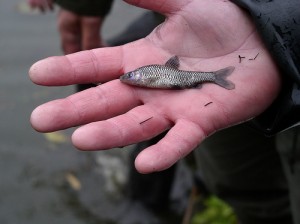-
- Buy a UK rod licence: EA Link
- 0800 807060 EA Hotline, Pollution, Poaching
- Thames Region River Levels
- Thames River Conditions
- Thames Temps and Clarity
- Thames Fishing Byelaws
- Thames Annual Tidefest
- Thames Record List
- Thames Eel Monitoring
- EA Annual Fisheries Report
- EA Flood Warnings
- Thames Sewage Discharge Notifications
- Thames Sewage Events
- Thames Tideway Tunnel
- River Thames Scheme: Reducing flood risk from Datchet to Teddington
- Martin Salter: Fighting for Fishing Blog
- Duncan Charmans World of Angling Blog
- Angling Trust
- Water and sewerage companies in England: environmental performance report 2013 – 2016
- EA Pollution incidents: 2014 evidence summary
- EA Pollution incidents: 2015 evidence summary
- River Crane and DNR Fisheries Impact assessment
- Links
Recent Tweets
Error retrieving tweetsNews Archive
Fishery Owners fined for keeping Invasive Species
Topmouth Gudgeon – Pic
Non-native fish pose major risks to our native fish and other wildlife. They can out-compete them for food and habitat, change the habitats they live in, spread disease and parasites and even eat our native fish. Keeping such fish without a licence is an offence under the Import of Live Fish (England and Wales) Act 1980.
When licences are granted, they are subject to strict conditions. Checks at Clawford Fishery revealed the presence of two potentially invasive species; topmouth gudgeon and wels catfish, in several of the 17 lakes at the site. The lakes flow into the River Claw, connected to the River Tamar and the presence of these highly invasive fish posed a direct risk to the rivers valuable Salmon populations.
Although only 3 – 4 inches long, the topmouth gudgeon, is one of the higest risk non-native species in Europe and consequently is not permitted in any waters. Wels catfish is Europe’s largest freshwater fish and can be a voracious predator. In fully-enclosed stillwaters, licences for keeping wels catfish may be issued, but in open sites connected to rivers, like Clawford, it poses a serious risk to other fish populations and cannot be kept.
This entry was posted in News and tagged Environment Agency, Fish, Invasive. Bookmark the permalink.


